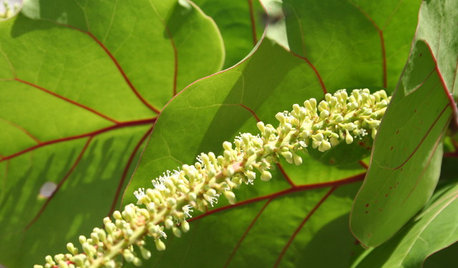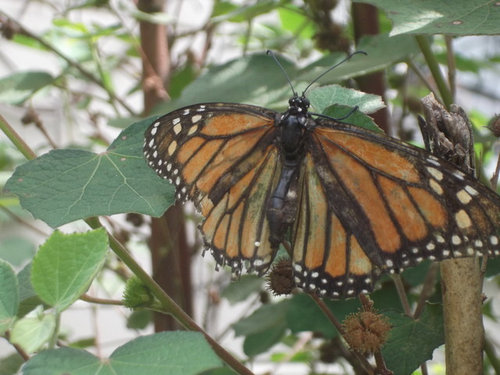Beat Up Female Monarch Butterfly
MonarchHelp
9 years ago
Related Stories

FALL GARDENINGWhat Monarch Butterflies Taught Me About Garden Design
Thinking like a butterfly leads to fresh perspectives in the garden and in life
Full Story
GARDENING FOR BUTTERFLIESBe a Butterfly Savior — Garden for the Monarchs
Keep hope, beauty and kindness alive in the landscape by providing a refuge for these threatened enchanters
Full Story
GARDENING GUIDES6 Plants That Beat Butterfly Bush for the Wildlife Draw
It's invasive, a nonnative and a poor insect magnet. Check out these better alternatives to butterfly bush in the garden
Full Story
GARDENING GUIDESGreat Design Plant: Asclepias Incarnata for a Butterfly Garden
Beautiful swamp milkweed makes it easy to help monarchs and other pollinators in eastern U.S. gardens
Full Story
GARDENING GUIDES6 New Plant Varieties That Beat Out Their Parents
With better resistance and fewer demands, these garden beauties are worth a spot on your wish list
Full Story
GARDENING GUIDES6 Steps to Creating Your Butterfly Garden
Encourage these fanciful winged beauties to visit your garden while helping restore their fragmented habitat
Full Story
GARDENING FOR BUTTERFLIESButterfly Gardening: Delight the Eyes With Living Sculptures
Surprise and thrill with a garden that attracts magical winged creatures, bringing color, movement and life
Full Story
FALL GARDENING7 Reasons Not to Clean Up Your Fall Garden
Before you pluck and rake, consider wildlife, the health of your plants and your own right to relax
Full Story
GARDENING GUIDESGreat Design Plant: Sea Grape, a Hardy Coastal Delight
Up to the high-tide line or even indoors, sea grape draws smiles for its looks and cheers for its tenacity
Full Story
GARDENING GUIDESAttract Hummingbirds and Bees With These Beautiful Summer Flowers
Roll out a welcome mat for pollinators to keep your landscape in balance and thriving
Full Story







Debra Vessels
MonarchHelpOriginal Author
Related Professionals
Peabody Landscape Contractors · Oakland Landscape Contractors · Tewksbury Landscape Contractors · Lauderdale Lakes Landscape Contractors · Claremont Fence Contractors · Fountain Hills Fence Contractors · Lexington Fence Contractors · Marana Fence Contractors · Rome Fence Contractors · Sammamish Fence Contractors · San Pedro Fence Contractors · Ventura Fence Contractors · Westmont Fence Contractors · St. Louis Window Contractors · Security-Widefield Window Contractorsrunmede
Debra Vessels
runmede
Debra Vessels
runmede
Debra Vessels
docmom_gw
MonarchHelpOriginal Author
MissSherry
Debra Vessels
roselee z8b S.W. Texas
Debra Vessels